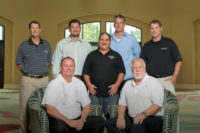
Located in Chinatown and Boston's theater district, the Thomas Lamb architectural giant the Boston Opera House is now a fully renovated ornate palace, resurrected from the near forgotten. The once registered "11 of the Most Endangered Historical Sites" has been operational since its premiere of "The Lion King," in July 2004. Singer-songwriter Lucinda Williams and indie garage rockers White Stripes are future acts scheduled to rock the house.
The $37 million-dollar restoration (and in some cases, preservation) was a 20-month process that began in fall 2003. When the theater originally opened in 1928, it was the B.F. Keith Memorial Theater, named after the vaudeville legend. It was mostly a venue for live theater, though beginning in the '60s, became a cinema known as the Savoy. In 1990, media Goliath Clear Channel purchased the property and in 2002, renovation officially began.
Although much of the structure was unscathed, years of neglect and an ailing roof resulted in severe damage to the theater's ornate Euro mix of Venetian palazzos and renaissance architecture. As a result of the crumbling from the top, the ceiling, which had a mural and sprawled cornice and moldings, was nearly destroyed. However, at no expense spared, general contractor Suffolk Construction hired ML McDonald, Local 534 Boston Plasterers & Cement Masons. Foreman of this company is veteran plasterer Pete Stracuzzi.
"I started August 2003, with just myself and a laborer, and then grew with five other plasterers for a total of nine plasterers and three laborers," says Stracuzzi. "When we first got there, the place was total darkness. Once we brought some lighting in there, we really got to see what the damage was and it was incredibly devastated. So, we took into consideration that we needed more help and that's when we found Sheldon (Austin) roaming the streets."

La Torza del Destino
Because architects Martinez & Johnson, of Washington D.C., specified all the original ornamental materials be duplicated, Austin had a lot of experience recreating original trim, cornice, molding, etc., through making rubber molds, then casting all new pieces that matched the original design using plaster."When I got on the job with only my toolbox, I just started making templates of every piece of cornice, everything on that prominent ceiling that the staging was set on," says Austin, owner of Austin Ornamental Inc., of Dedham, Mass. "My approach was to make the templates and get the runs done. Once I had those done, Pete would coordinate the guys to start installing all the runs and then I'd begin making rubber molds and that's a whole process in and of itself. And then the casting of those molds and doing the layout and setting all the castings."
A million-dollar staging was erected since most of ML McDonald's work was 100 feet up. Plenty of work was done in the theater's catwalks, "like ‘Phantom of the Opera'," says Stracuzzi.
This job runs the tight line of being considered renovation vs. preservation. Austin and Stracuzzi both state everything replaced was consistent with all the materials originally used. So, Structolite plaster was used for all scratch coats and Austin is a big fan of the Smooth-On line of mold-making materials. Other tools used on this project were nothing modern, just the standard leafing and carving tools, miter rods and others.
"When this was built, they used gelatin molds," says Austin. "I had the advantage of using urethanes and latex, silicone rubbers, and whatever I could use. There are different rubbers I could use for different applications, depending how much relief one model has to another, whether it's a one-piece mold or two piece."

Dome time
The biggest challenge on this project is the ellipse ceiling and the dome. A great deal of math was put to use during the process."One of the old domes had completely deteriorated and fallen apart and the only thing that was left was the black iron," says Austin. "Before we did the demolition, we had to take all the measurements of every single part of the dome and know exactly where the starting point for the radius was and how deep it had to be. I had to incorporate a molding into the template that was located halfway down the dome. Next, after the scratch and brown coats were cured and the template completed, it was time for the finish coat to be applied. We used a latch pin to hold the template in place. Then, it was just a matter of applying the finish plaster and running the template in circles and repeating this process over and over until the dome was done."
One theory the workers formed while up there working was the level of craftsmanship the original plasterers had practiced. They noticed that the higher up they were, how several corners were cut.
"We think the apprentices did most of the plastering up on the very top, because the level of work was less than desirable as compared to what we found as we went further down," says Austin. "From the ground looking up, the human eye couldn't trace every minute detail so they sent the not-so-experienced up there."
Stracuzzi says everyday on the job site was a new exploration in skill and problem solving; several obstacles were met and dealt with on a collaborative level. Sometimes, he says the general contractor and owners had ideas that weren't always practical and Stracuzzi had to come up with alternatives, to which everyone came to agreement on.
Overall, the contractors' say that this job was one of the rare opportunities that most in the trade covet. ML McDonald's work on the Boston Opera House is one that they view as the ultimate resume topper. Rehabilitating a Beaux Arts-style building that fell into the abyss of "forgotten and dismissed" and now to its grand stature, once again, has everyone involved quite proud. Now, the gents of Local 534 seem to have plenty of work in New England and Austin has a collection of rubber moldings archived. Not bad.





